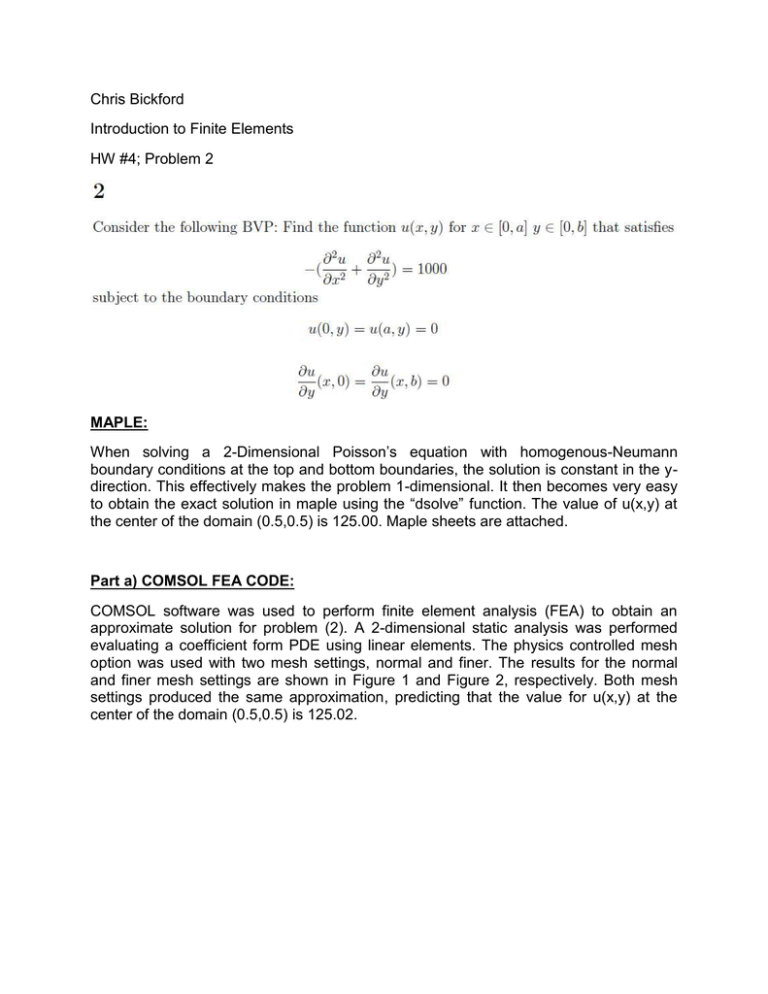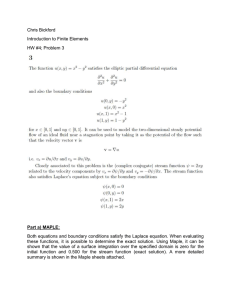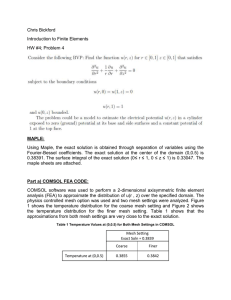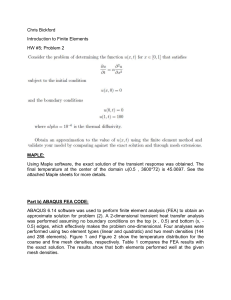Chris Bickford Introduction to Finite Elements HW #4; Problem 2
advertisement

Chris Bickford Introduction to Finite Elements HW #4; Problem 2 MAPLE: When solving a 2-Dimensional Poisson’s equation with homogenous-Neumann boundary conditions at the top and bottom boundaries, the solution is constant in the ydirection. This effectively makes the problem 1-dimensional. It then becomes very easy to obtain the exact solution in maple using the “dsolve” function. The value of u(x,y) at the center of the domain (0.5,0.5) is 125.00. Maple sheets are attached. Part a) COMSOL FEA CODE: COMSOL software was used to perform finite element analysis (FEA) to obtain an approximate solution for problem (2). A 2-dimensional static analysis was performed evaluating a coefficient form PDE using linear elements. The physics controlled mesh option was used with two mesh settings, normal and finer. The results for the normal and finer mesh settings are shown in Figure 1 and Figure 2, respectively. Both mesh settings produced the same approximation, predicting that the value for u(x,y) at the center of the domain (0.5,0.5) is 125.02. Figure 1 Normal Mesh Setting: Linear Element Type Figure 2 Finer Mesh Setting: Linear Element Type Part b) ABAQUS FEA CODE: ABAQUS 6.14 software was used to perform finite element analysis (FEA) to obtain an approximate solution for problem (1). A 2-dimensional static heat transfer analysis was performed assuming the thermal conductivity is 1, the temperature is 0 at the side boundaries, and the heat flux load is 1000. Two mesh densities were evaluated, one with 64 elements and one with 900 elements. Results for the former are shown in Figure 3 and results for the latter are shown in Figure 4. Both mesh densities produced the same approximation, predicting the value of u(x,y) at the origin (0,0) is 125.00. Figure 3 Sixty-four (64) Elements: Linear Element Type Figure 4 Nine-hundred Elements: Linear Element Type







